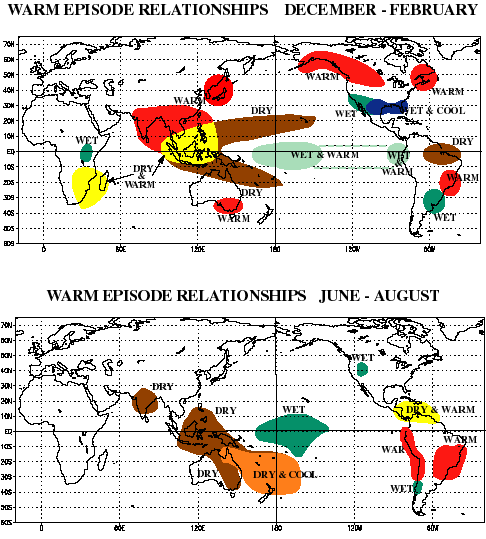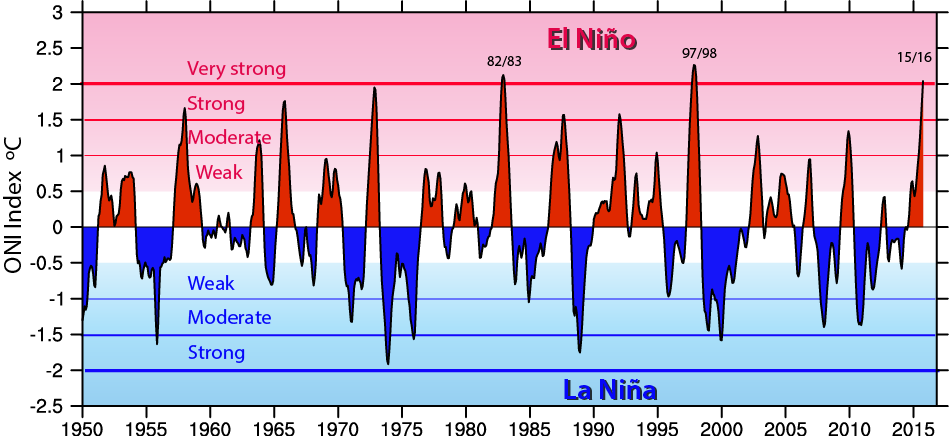3.6 - El Nino and La Nina
Objectives:
- To understand that changes in the equatorial Pacific Ocean can have wide ranging consequences.
- To know that the NOAA and others are monitoring the ocean with the TAO array of moorings and satellites.
- To know the effect that El Nino/La Nina has on the Atlantic hurricane season.
There are periodic changes in the climate around the Pacific and Indian Oceans. It was discovered that these are mainly caused by a phenomenon known as the El Nino Southern Oscillation (ENSO) or El Nino for short. The warm surface water can be shifted either to the west or east, which then affects the convection of the ITCZ. This convection drives the winds, that in turn drive the surface currents and rainfall. The system is unstable and steadily oscillates from one extreme (El Nino) to the other (La Nina). The effects of this massive oscillation are wide ranging and so many nations contribute to the active monitoring of the ocean temperatures of the equatorial Pacific.
Move the slider to see how the position of the warm surface water affects the climate on either side of the Pacific and Indian Oceans.
|
The diagram on the left shows some of the effects of the El Nino phase during the winter (top) and the summer (bottom). El Nino can lead to droughts in Australia and Africa as well as a delayed Monsoon in India. This has massive implication for crops. On the eastern side of the Pacific, it can lead to heavy rainfall, flooding and landslides.
Also, as El Nino increases the upper level winds across Central America, which increases difference in wind speeds between the upper levels of the atmosphere and sea level. This has the side effect of suppressing the strengthening of North Atlantic hurricanes. Conversely, a La Nina event reduces the wind shear, which encourages hurricanes to strengthen. So, when forecasters are predicting the hurricane season as a whole, they always look at the state of the El Nino/La Nina oscillation. This massively affects the Bermuda re-insurance industry! |
|
|
ACTIVITIES
Below is the powerpoint presentation that I made for the lesson.
Below is the powerpoint presentation that I made for the lesson.
| 3.6-el_nino.pptx | |
| File Size: | 2620 kb |
| File Type: | pptx |

